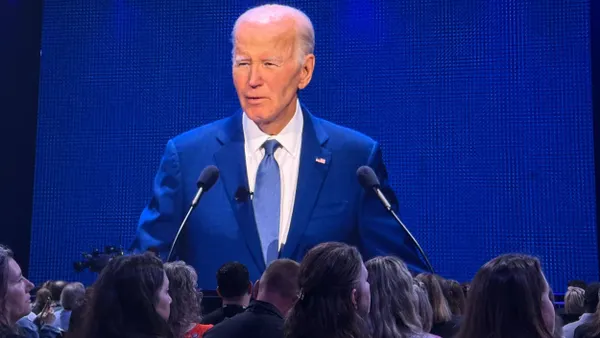Helen Calvin is chief revenue officer at Jellyvision.The views expressed here are the author's own.
With unemployment near its lowest rate in half a century, it's a job seeker's market. That means the pressure for employers to recruit (and retain) top talent has never been more intense. As the savviest companies know, it's going to take more than a traditional compensation-and-benefits approach to win the best candidates over — and to keep your star players from switching teams.
Luckily, there's a simple, cost-effective way to make your total rewards package more appealing than ever: communicate what you've already got more effectively. The better your employees understand what they have, the more likely they are to see its value (and the less likely they are to be wooed away by another company.) As for prospective employees, they'll be more likely to give your company a shot if they understand exactly what you're offering from the outset and can see its value.
These five easy tips can help you build up a killer employee communication strategy, all but ensuring your victory in the talent war.
1. Maximize personalization
If you've ever bought a key ring with your name on it, or haughtily tossed out mail addressed to "Current Resident," then you, too, understand the basic human desire to be treated like an individual.
Unsurprisingly, your employees feel that too. People get bored when they're reading something they don't feel is relevant to them. And when they're bored, they're definitely not fully engaged with (or understanding) the material.
So what does personalization look like in action? If you have a few different groups of employees, sort your information by relevant category. For example, your union employees will be more engaged if they can go straight to the "union benefits" section of your benefits guide instead of slogging through a laundry list of general info that might not apply to them.
Another tactic: address the reader as "you" in your communication materials. It may seem small but speaking directly to the individual (instead of indirectly talking about what "employees" need to do) can make a big difference.
Finally, don't feel locked into one-size-fits-all videos and PowerPoint presentations as your only methods for communication. Consider offering interactive decision support tools; these can ask employees questions about their unique health care situations, and then provide custom benefits advice that makes the most sense for each individual.
2. Good communication is jargon-free
To avoid employee frustration and confusion, keep your communication blissfully free from overly confusing legalese. Instead, explain everything as clearly as possible. When you first mention a healthcare-specific term or acronym (I'm lookin' at you, "deductible" and "COBRA"), provide a simple definition. When you're explaining a complex topic, make it sound like a real human being wrote it with the goal of ensuring other humans can understand it. This will not only help your employees understand their offerings, but also keep them from making poor choices because they're not sure what's going on.
3. Style matters
The look and feel of the information you deliver is just as important as the information itself. Skimp on presentation, and your important message may never get read. So, as you're creating your employee communications, make sure to:
- Ask your designers to create uncluttered, easy-to-scan layouts with eye-catching images;
- Anticipate what information might cause the most confusion for employees and provide answers the moment they need it; and
- Whenever you ask employees to do — rather than just learn — something, give them a clear call-to-action (for example,"Sign up now!").
4. Send messages when they're relevant
We all naturally pay more attention to communications when they relate to something we're already focused on. Keep that in mind when you're setting up your communications calendar.
For example, if you've been meaning to share some financial wellness education, try sending it out around tax time (or when promotions or bonuses are going out.) That way, your employees will have more reason to engage than they would during another, more arbitrary, time.
5. Don't limit your communication to the folks undergoing changes
Most HR communications target employees going through major changes (qualifying-event guides, onboarding documents, etc.). But while a select group of employees experience change, their co-workers are affected by those changes as well.
For instance, your employees might wonder how their roles will change once a new hire arrives, or they may want clarity about how they'll have to compensate for the absence of a team member on leave. With that in mind, make sure to create communications for those secondary audiences, too. They'll feel reassured during a potentially stressful time, and they'll be more likely to engage with your messaging down the road.
Now more than ever, your company needs to put its best foot forward to acquire and keep the best employees. With a few simple steps and communication tweaks, you can do your part to keep your existing workforce happy, and make new hires feel like they're stepping into a truly awesome workplace.












